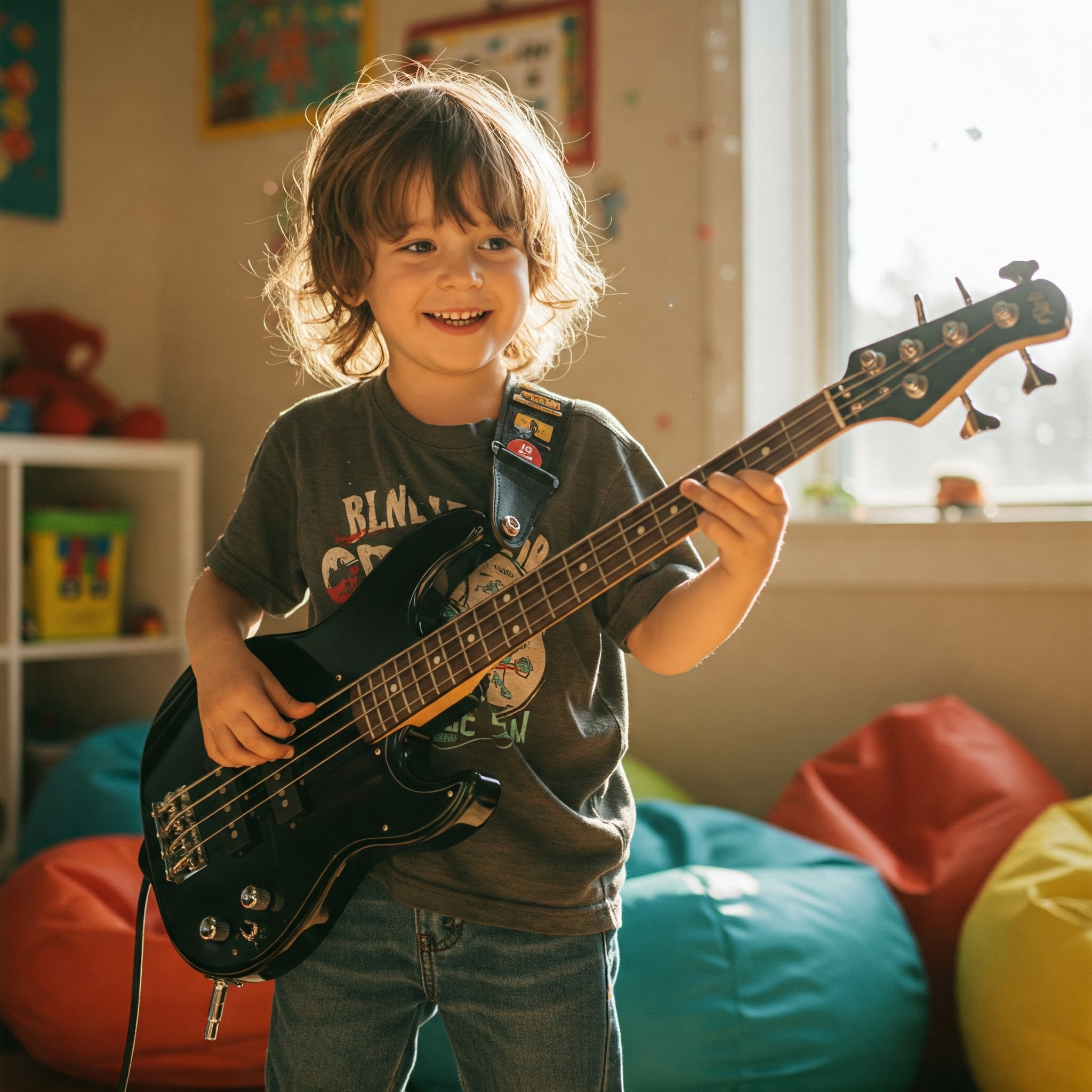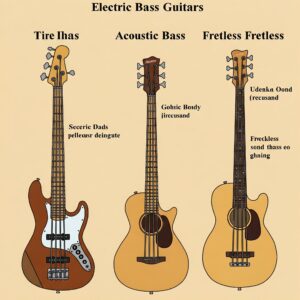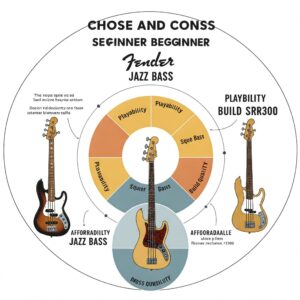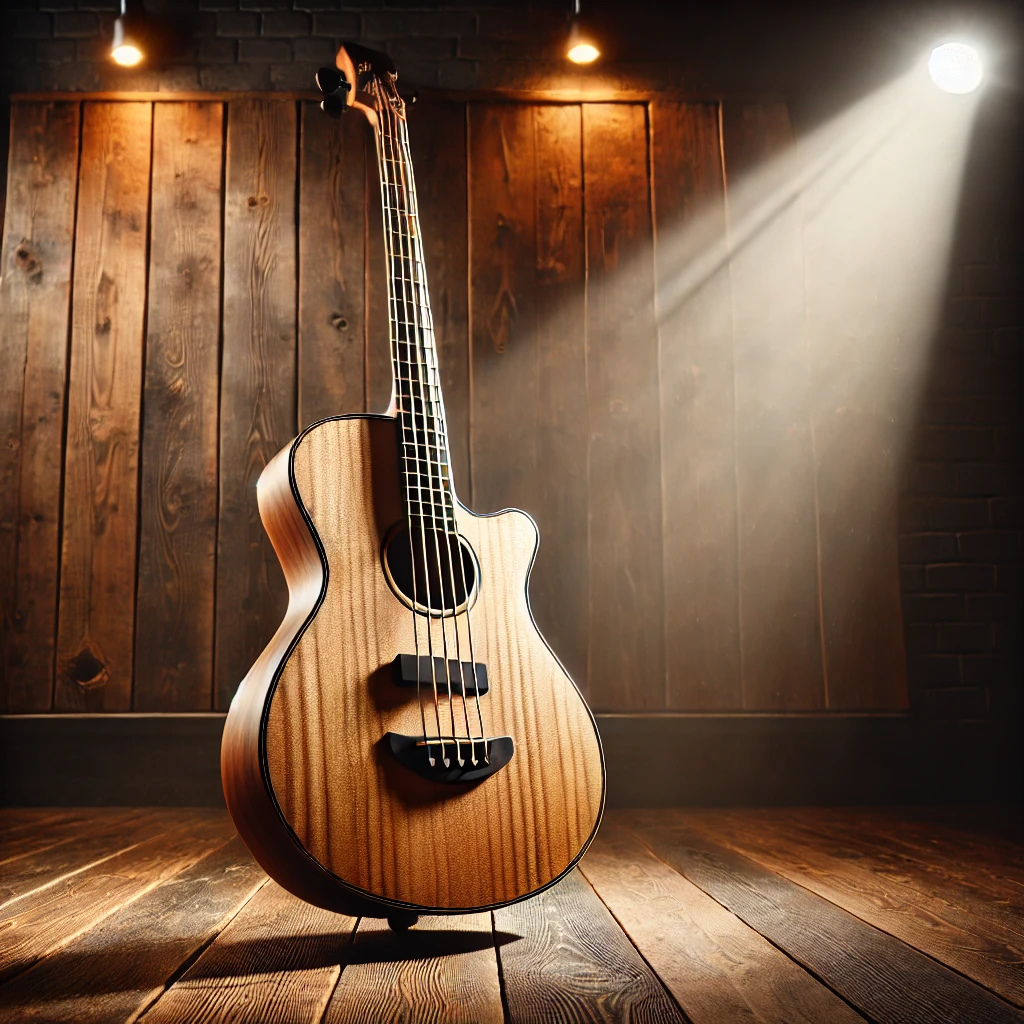Kickstarting Your Child’s Musical Journey 🎵
Are you searching for the perfect children’s bass guitar to ignite your young one’s passion for music? You’re making an incredible choice! As a music educator with over a decade of experience teaching young bassists, I’ve witnessed firsthand how learning the bass guitar can transform a child’s life. Not only does it develop coordination and cognitive skills, but it also builds confidence and provides a creative outlet that will last a lifetime.
The bass guitar forms the backbone of nearly every musical genre, from rock and pop to jazz and funk. It’s the instrument that bridges rhythm and harmony, creating that infectious groove that gets people moving. And contrary to popular belief, children’s bass guitars are specifically designed to make this wonderful instrument accessible to young players.
In this comprehensive guide, I’ll walk you through everything you need to know about children’s bass guitars – from understanding what makes them different from adult versions to selecting the perfect model for your budding musician. I’ll also share my top recommendations based on years of seeing what actually works for kids of different ages and skill levels.
Let’s dive in and find the perfect children’s bass guitar that will set your young rockstar on the path to musical success!
What Makes a Children’s Bass Guitar Different? 🔍
Before we explore specific models, it’s essential to understand what sets a children’s bass guitar apart from standard adult versions. These key differences make all the difference in ensuring a positive and encouraging learning experience.
Size Matters: Scale Length Explained ✅
The most significant difference in a children’s bass guitar is the scale length – the distance between the nut and the bridge. Standard bass guitars typically have a 34-inch scale, which is simply too large for small hands to navigate comfortably. Children’s bass guitars offer:
- Short-scale options (28-30 inches): Perfect for older children and teens
- Mini-scale versions (24-28 inches): Ideal for younger children around 8-11 years
- Micro-scale models (below 24 inches): Best suited for very young beginners (5-8 years)
This reduced scale length means smaller distances between frets, making it easier for little fingers to form chords and reach notes without straining.

Weight Considerations ⚖️
Adult bass guitars can weigh anywhere from 8-12 pounds – far too heavy for a child to hold comfortably for practice sessions. Children’s bass guitars are designed with lightweight woods and sometimes smaller body profiles to reduce the overall weight, typically ranging from 4-7 pounds. This makes practicing for longer periods possible without fatigue or discouragement.
Simplified Features 🎛️
Many children’s bass guitars offer simplified electronics and fewer controls to avoid overwhelming beginners. While professional basses might have multiple pickups, tone controls, and switching options, a good children’s bass guitar focuses on simplicity with:
- Basic volume and tone controls
- Single pickup design (in many cases)
- Straightforward passive electronics
This simplification helps young players focus on developing fundamental skills without getting lost in technical complexities.
Price Point 💰
Let’s be honest – starting any new instrument involves some uncertainty about long-term interest. Children’s bass guitars generally come at a more accessible price point, making them a smarter initial investment. However, as we’ll discuss later, it’s important not to go too cheap, as extremely low-quality instruments can hamper progress and enthusiasm.
Why the Right Size Bass Guitar Is Crucial for Children 🚸
Choosing the appropriate size isn’t just about comfort – it’s about setting your child up for success and preventing potential issues. Here’s why getting the right-sized children’s bass guitar matters:
Preventing Physical Strain and Injury 🩹
When children struggle with oversized instruments, they often develop poor technique and harmful compensatory habits that can lead to:
- Wrist strain and potential repetitive stress injuries
- Shoulder and back discomfort from improper positioning
- Finger stretching beyond natural capacity
These physical challenges can quickly transform what should be an enjoyable experience into a frustrating one.
Building Confidence Through Proper Technique ✨
A properly sized children’s bass guitar allows young players to develop correct technique from day one. This builds confidence as they:
- Successfully play notes and simple bass lines
- Maintain proper hand positioning
- Progress more rapidly through initial learning stages
The satisfaction of hearing themselves play correctly is a powerful motivator for continued practice.
Fostering Long-Term Interest 🌱
Perhaps most importantly, the right children’s bass guitar makes playing enjoyable rather than frustrating. When children can actually produce good sounds and feel comfortable with their instrument, they’re much more likely to stick with it long-term, developing a lifelong passion for music.
How to Choose the Right Children’s Bass Guitar: Key Factors 🔑
With the basics covered, let’s explore the critical factors to consider when selecting the perfect children’s bass guitar for your young musician.
Age and Physical Size of Your Child 📏
While age can provide a general guideline, your child’s physical size is more important in determining the appropriate bass guitar:
- Ages 5-8: Very small hands typically require micro-scale basses (under 24 inches)
- Ages 8-11: Short to mini-scale basses (24-28 inches) usually work well
- Ages 12+: Many can handle short-scale basses (30 inches), though some may still need mini-scale
The key test: Your child should be able to reach the first fret with their fretting hand while their picking hand can comfortably reach the strings over the body.
Construction Quality and Durability 🛠️
Children can be hard on instruments, so durability matters. Look for:
- Solid body construction (avoid hollow bodies that can be more easily damaged)
- Quality tuning machines that hold tuning well
- Reinforced neck joints
- Smooth fret edges to prevent finger discomfort
I always recommend investing in instruments with better construction when possible, as they withstand the inevitable bumps and drops of childhood use.
Playability Factors 🎮
Several specific features contribute to making a children’s bass guitar more playable:
- String action: The distance between strings and fretboard should be low (but not too low to cause buzzing)
- Neck profile: A thin neck profile is easier for small hands to grip
- String tension: Some models offer lighter tension strings that are easier to press down
- Weight distribution: A well-balanced instrument won’t neck-dive when played
Sound Quality 🎧
While professional-grade tone isn’t the primary concern for beginners, the bass should still produce a pleasing sound that motivates practice. Avoid the cheapest options, as their poor tone can be discouraging even to untrained ears.
Budget Considerations 💵
Children’s bass guitars generally fall into three price categories:
- Entry-level ($100-200): Basic models suitable for determining interest
- Mid-range ($200-350): Better construction and playability, good for committed beginners
- Premium ($350-500+): High-quality instruments that will grow with your child’s skills
I generally recommend the mid-range for most families, as they offer a good balance between quality and investment.

Top 7 Children’s Bass Guitars for Young Players in 2025 🏆
After reviewing dozens of models and gathering feedback from my students, here are my top recommendations for children’s bass guitars across different age groups and budgets:
For Very Young Beginners (Ages 5-8)
1. Ibanez GSRM20 Mikro Short-Scale Bass Guitar ⭐⭐⭐⭐⭐
The Mikro is a fantastic children’s bass guitar that doesn’t feel like a toy, despite its small size.
Key Features:
- 28.6″ scale length – perfect for young players
- Lightweight at just 7 pounds
- Dynamic P/J pickup configuration
- Available in multiple fun colors
- Surprisingly rich tone for a small instrument
This is my top recommendation for younger children who are serious about learning. The quality construction means it will last through years of practice, and the sound is impressive enough to keep children motivated.
2. Squier by Fender Mini Precision Bass ⭐⭐⭐⭐
This scaled-down version of the iconic Precision Bass offers that classic Fender tone in a package suitable for children.
Key Features:
- 28.6″ scale length
- Simplified single pickup design
- Comfortable “C”-shaped neck profile
- Lightweight body
- Authentic Fender look and feel
Many of my young students love this bass because it looks like “a real bass that famous musicians play,” which can be highly motivating for children.
For Intermediate Young Players (Ages 8-12)
3. Sterling by Music Man StingRay Short Scale Bass ⭐⭐⭐⭐⭐
This premium option delivers professional features in a size suitable for older children and teens.
Key Features:
- 30″ scale length
- Active preamp for tonal versatility
- Superior ergonomics and balance
- High-quality hardware and electronics
- Exceptional playability with low action
For families with a higher budget who know their child is committed to learning, this bass offers features that will satisfy even as skills advance significantly.
4. Gretsch G2220 Junior Jet Bass II ⭐⭐⭐⭐
This stylish short-scale bass combines vintage aesthetics with modern playability.
Key Features:
- 30.3″ scale length
- Mini-dual coil pickups for punchy tone
- Basswood body keeps weight manageable
- Comfortable oval neck profile
- Distinctive look that stands out
The slightly longer scale makes this more suitable for taller children or those approaching their teens with a bit more hand strength.
Budget-Friendly Options
5. Squier Bronco Bass ⭐⭐⭐⭐
This affordable Fender subsidiary model offers surprising quality at an entry-level price point.
Key Features:
- 30″ scale length
- Simplified single-pickup design
- Thin “C”-shaped neck that’s easy to grip
- Solid agathis body construction
- Excellent value for beginners
I’ve recommended this model to many families uncertain about their child’s long-term interest in bass. It’s inexpensive enough for experimentation but playable enough to support genuine learning.
6. Rogue Rocketeer Bass Guitar ⭐⭐⭐
The ultimate budget option that still delivers playability for young beginners.
Key Features:
- 30″ scale length
- Lightweight construction
- Basic but functional hardware
- Dual pickups for tonal variety
- Amazing price point for families on tight budgets
While I generally caution against the very cheapest instruments, this model represents the minimum quality I would recommend. It’s a functional starter that won’t actively impede learning.
Premium Option for Serious Young Bassists
7. Hofner Ignition Series Violin Bass ⭐⭐⭐⭐
This iconic “Beatles bass” style instrument is naturally shorter in scale and lightweight.
Key Features:
- 30″ scale length
- Ultra-lightweight hollow body design
- Unique tone perfect for pop and rock
- Beautiful vintage aesthetics
- Excellent resale value
For children who show serious commitment and perhaps lean toward classic rock styles, this distinctive bass offers professional quality in a naturally kid-friendly size.

Comparison of Top Children’s Bass Guitars
| Model | Scale Length | Weight | Best For Ages | Price Range | Notable Feature |
|---|---|---|---|---|---|
| Ibanez GSRM20 Mikro | 28.6″ | 7 lbs | 5-10 | $$$$ | Versatile P/J pickups |
| Squier Mini P Bass | 28.6″ | 7.5 lbs | 5-10 | $$$ | Classic P-Bass tone |
| Sterling StingRay Short Scale | 30″ | 8 lbs | 8-13 | $$$$$ | Active electronics |
| Gretsch Junior Jet II | 30.3″ | 8 lbs | 8-13 | $$$$ | Distinctive look |
| Squier Bronco Bass | 30″ | 7 lbs | 7-12 | $$ | Best value |
| Rogue Rocketeer | 30″ | 7 lbs | 7-12 | $ | Budget friendly |
| Hofner Ignition Violin Bass | 30″ | 5 lbs | 8-13 | $$$$$ | Lightest weight |
Ready to give your child the gift of music? Check out these fantastic children’s bass guitars on Amazon now and watch their musical journey begin! Each model offers the perfect combination of playability and quality to inspire young bassists. 🎸
Essential Accessories for Your Child’s Bass Guitar 🎒
To ensure your young bassist has everything needed for success, consider these must-have accessories:
Comfortable Strap ✅
A good quality, padded strap makes all the difference for children learning to play standing up. Look for:
- Wider straps (2-3 inches) that distribute weight better
- Adjustable length to grow with your child
- Padding in the shoulder area for comfort
Electronic Tuner 🎯
Staying in tune is essential for developing a good ear and enjoying the playing experience. Consider:
- Clip-on headstock tuners that are easy for children to use
- App-based tuners for tech-savvy kids
- Simple interface with clear visual feedback
Protective Case or Gig Bag 💼
Protecting your investment is important, especially with active children:
- Padded gig bags offer good protection for home use and lessons
- Hard cases provide maximum protection but add weight
- Look for options with storage pockets for accessories
Beginner-Friendly Instruction Materials 📚
The right learning resources make a huge difference:
- Bass method books designed specifically for children
- Online video lessons geared toward young players
- Interactive apps that make practice feel like games
Amplifier Considerations 🔊
While not strictly necessary at first (headphone amps are an option), a small practice amp eventually becomes important:
- 10-20 watt practice amps are sufficient for home use
- Look for models with headphone outputs for quiet practice
- Simple controls that children can understand easily
Getting Started: First Steps With a Children’s Bass Guitar 👣
Once you’ve selected the perfect children’s bass guitar, here are some tips to help your young musician get off to a great start:
Setting Up for Success 🎯
- Have the bass professionally set up: Most instruments benefit from proper adjustment of action, intonation, and neck relief. This small investment makes a huge difference in playability.
- Create a dedicated practice space: Even a small corner with good lighting, a music stand, and a comfortable chair can help establish a practice routine.
- Start with short, regular practice sessions: 10-15 minutes daily is far better than an hour once a week, especially for younger children.
Finding the Right Teacher 👨🏫
While some children are self-motivated enough to learn from books and videos, most benefit enormously from personalized instruction:
- Look for teachers with specific experience teaching bass to children
- Consider group classes as a fun, less intimidating option for beginners
- Ask potential teachers about their approach to teaching young students
- Ensure teaching styles match your child’s learning preferences
Making Practice Fun 🎮
Maintaining enthusiasm is crucial in the early stages:
- Incorporate games and challenges into practice time
- Help your child learn songs they already know and love
- Celebrate small victories and milestones
- Consider occasional jam sessions with friends or family members
Common Questions About Children’s Bass Guitars 🤔
Here are answers to some frequently asked questions from parents considering a children’s bass guitar:
At what age can a child start learning bass guitar? 🧒
Children as young as 5 or 6 can begin learning on appropriately sized instruments. The key factors are attention span, hand size, and interest level rather than a specific age.
Should we rent or buy a children’s bass guitar? 💰
While renting can seem appealing, quality rental options for children’s bass guitars are limited. Given the relatively modest investment for entry-level models, purchasing often makes more sense. If budget allows, buying a better quality instrument will provide a better learning experience.
How do we know if our child is ready for a full-sized bass? 📏
The best indicators are:
- They can comfortably reach the first frets without straining
- Their picking hand can rest naturally over the pickup area
- They can maintain proper technique without visible discomfort
- They’ve grown significantly since beginning on their smaller instrument
This typically happens in the early teen years but varies considerably based on physical development.
Are 4-string or 5-string basses better for beginners? 🎸
For children, 4-string basses are almost always the better choice. The narrower neck and simpler approach allow for developing proper technique before introducing the complexity of a 5th string.
How much should we expect to spend on a quality children’s bass guitar? 💵
While you can find options under $100, these rarely provide a good learning experience. A better range for beginners is $150-300, which offers instruments that are properly playable without being prohibitively expensive.
Benefits of Learning Bass Guitar for Children 🌟
As we wrap up this guide, it’s worth highlighting the many benefits your child will gain from learning the bass guitar:
Musical Development 🎵
- Understanding of rhythm, harmony, and musical structure
- Development of aural skills and musical ear training
- Foundation for learning other instruments later
Cognitive Benefits 🧠
- Improved hand-eye coordination
- Enhanced mathematical thinking through rhythm patterns
- Better concentration and focus
- Development of multitasking abilities (coordinating both hands differently)
Social and Emotional Growth 💞
- Increased confidence through skill mastery
- Opportunity to join bands and musical groups
- Sense of accomplishment through practice and improvement
- Healthy emotional outlet for self-expression
Life Skills 🌱
- Discipline and persistence through regular practice
- Time management and goal setting
- Problem-solving when tackling difficult musical passages
- Learning to receive and implement feedback
Conclusion: Launching Your Child’s Bass Guitar Journey 🚀
Selecting the right children’s bass guitar is the first step in what could become a lifelong musical journey for your child. By focusing on appropriate size, quality construction, and playability, you’ll set your young bassist up for success from the very beginning.
Remember that the best instrument is ultimately the one that gets played regularly. A comfortable, good-sounding bass that inspires your child to pick it up and practice is worth its weight in gold, regardless of brand name or price tag.
Whether you choose the Ibanez Mikro for your elementary schooler or the Sterling StingRay Short Scale for your music-obsessed tween, the key is supporting their interest with encouragement, opportunities to play, and appreciation of their progress.
Ready to transform your child’s musical dreams into reality? The perfect children’s bass guitar is just a click away! Browse our top recommendations on Amazon now and give the gift of music that will last a lifetime. 🎵
More FQAs:
❓ What is the ideal age for a child to start learning bass guitar?
✅ Children as young as 8 years old can begin learning the bass guitar, especially when using short-scale or 3/4 size models designed for smaller hands and shorter arms...
❓ How does a short-scale bass benefit young learners?
✅ Short-scale basses, typically with a scale length of 30 inches or less, offer closer fret spacing and reduced weight, making them more manageable for children and aiding in comfortable playability...
❓ Are there specific bass guitar models recommended for children?
✅ Yes, models like the Squier Mini Precision Bass and the Ibanez GSRM20 Mikro are popular choices for young players due to their smaller size and user-friendly features...
❓ What accessories are essential for a child's bass guitar setup?
✅ Essential accessories include a comfortable, adjustable strap, a lightweight amplifier suitable for practice, and a padded gig bag for safe transportation and storage...
❓ How can I ensure my child maintains proper posture while playing the bass guitar?
✅ Ensure the bass is appropriately sized, adjust the strap so the instrument sits at a comfortable height, and encourage regular breaks to promote good posture and prevent strain...
Recommended for You:
- Best Bass on Headphones: 7 Top Picks for Thunderous Sound in 2025
- 7 Best Bass Guitar Pickups That Will Transform Your Sound in 2025
- Bass Flutes: 7 Amazing Facts About This Powerful Instrument in 2025
Disclaimer: This article contains affiliate links. If you purchase products through these links, we may earn a small commission at no additional cost to you.







